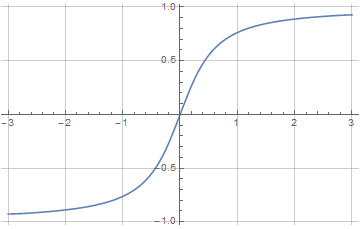If it may also be a graphic solution? Consider:
FunctionDomain[ArcTanh[a], a]
(* -1 < a < 1 *)
((a^2 - 1)*((a^2 - 1)*ArcTanh[a] - a))/(2*Sqrt[2*(a^2 - 1)^4]) == c*x;
x[a_] = 1/c*((a^2 - 1)*((a^2 - 1)*ArcTanh[a] - a))/(2*Sqrt[2*(a^2 - 1)^4]);
With c as parameter
p = Plot[x[a] /. c -> 1, {a, -1, 1}, AxesLabel -> Automatic, GridLines -> Automatic]
p1 = Join @@ Cases[Normal@p, Line[x1__] :> x1, Infinity];
a = Interpolation@Thread@{Last /@ p1, First /@ p1}
Plot[a[x], {x, -3, 3}, GridLines -> Automatic, AxesLabel -> Automatic]
Edit
The easiest way to find the function a(x) is to build the inverse of f(a).
f = 1/c*((#^2 - 1)*((#^2 - 1)*ArcTanh[#] - #))/(2*Sqrt[2*(#^2 - 1)^4]) &;
a = InverseFunction@f
This function can be evaluated numerically with c as parameter, e.g.
c = 1;
Table[a[x], {x, -2, 2}] // N
(* {-0.888998, -0.76291, 0., 0.76291, 0.888998} *)
Plot[{f[x], a[x]}, {x, -2, 2}, GridLines -> Automatic,
PlotLegends -> {"f[x]", "a[x]"}, AspectRatio -> 0.8]
Edit 2
Please forgive me, I have a problem with the solutions. I follow here Michel E2's method.
f = ((a^2 - 1)*((a^2 - 1)*ArcTanh[a] - a))/(2*Sqrt[2*(a^2 - 1)^4]) - c x /. a -> a[x];
df = D[f, x] // Simplify
sol = DSolve[df == 0, a, x] /. C[1] -> 0
c = 1;
Plot[a[x] /. sol, {x, -2, 2}, GridLines -> Automatic]








